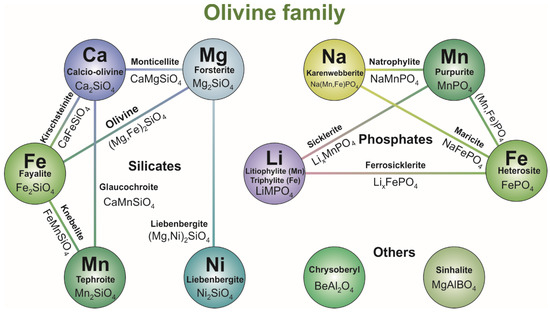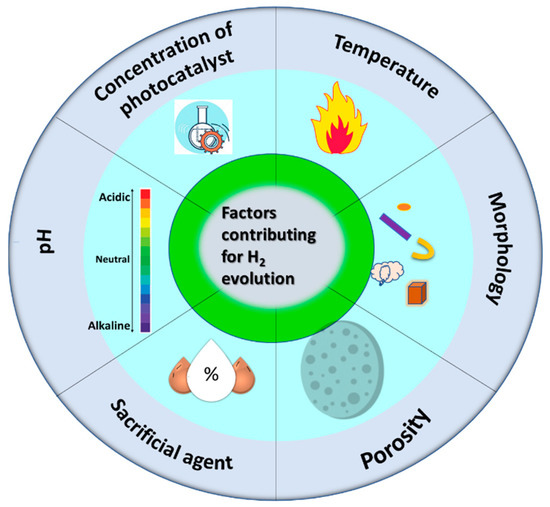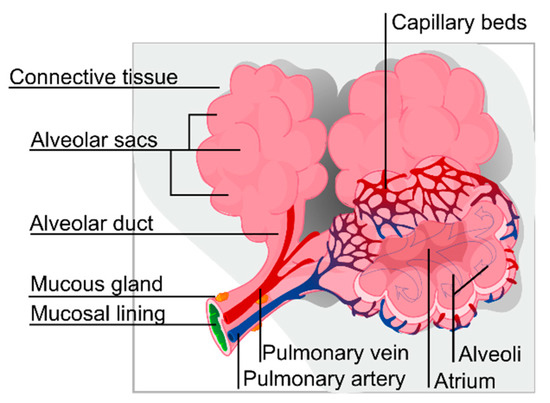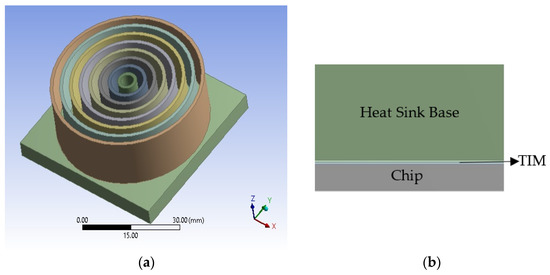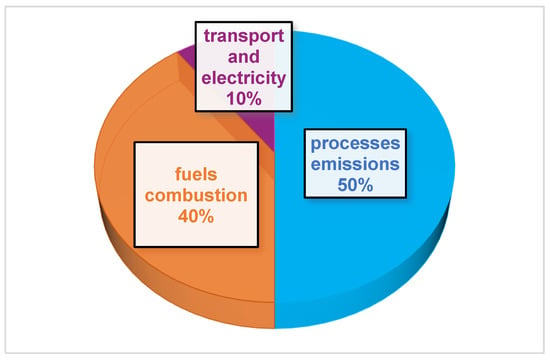Advanced Energy Materials and Research
Share This Topical Collection
Editors
 Prof. Dr. Nigel D. Browning
Prof. Dr. Nigel D. Browning
 Prof. Dr. Nigel D. Browning
Prof. Dr. Nigel D. Browning
E-Mail
Website
Guest Editor
Pacific Northwest National Laboratory, School of Engineering & School of Physical Sciences, University of Liverpool, Liverpool L69 3GQ, UK
Interests: atomic resolution and operando scanning transmission electron microscopy studies of energy storage materials and processes; multimodal characterization of new battery systems for a circular economy
Special Issues, Collections and Topics in MDPI journals
 Prof. Dr. Sara Walker
Prof. Dr. Sara Walker
 Prof. Dr. Sara Walker
Prof. Dr. Sara Walker
E-Mail
Website
Guest Editor
Professor in Energy, Director of The Centre of Energy, School of Engineering, Newcastle University, Newcastle upon Tyne NE1 7RU, UK
Interests: whole energy systems, low-energy and low-carbon buildings, building-scale renewables, small scale energy storage, and electric vehicle charging/discharging load profiles
Special Issues, Collections and Topics in MDPI journals
Topical Collection Information
Dear Colleagues,
We are inviting submissions to a Special Issue of Energies on “Advanced Energy Materials and Research”.
The increasing energy demand and consumption due to growing global population and the critical relationship between energy, environment, and sustainability lead to novel discoveries and advancements in the field of energy materials in search of alternative resources as well as recycling and reuse of energy materials. Energy materials are making groundbreaking developments in the science of materials innovation and production. The transformation of conventional fossil fuel to renewable and sustainable energy sources due to the geophysical and social stress results in the development of advanced energy materials to support emerging technologies. The emerging materials for energy associated application include but are not limited to photovoltaic, batteries, fuel cells, nanostructured materials, and light sources.
In this Special Issue of Energies, original research articles or reviews on topics related to advanced energy materials and their characterization are welcome. Topics of interest for publication include but are not limited to:
- Advanced energy materials
- Recycling and reuse of energy materials
- Solar energy materials
- Hydrogen energy and fuel cell technology
- Semiconductor materials
- Batteries and energy materials
- Nanotechnology and energy materials
- Advanced nanomaterials
- Energy harvesting materials
- Bio-materials for energy production
- Carbon materials in energy
- Biomaterials and surface science engineering
- Solid electrolytes
- Advanced graphene materials
- Electric, hybrid, and fuel-cell vehicles
- Polymer materials
- Mining, metallurgy, and materials science
Electrical, optical and magnetic materials
Dr. Prodip K. Das
Prof. Nigel D. Browning
Dr. Sara Walker
Guest Editors
Manuscript Submission Information
Manuscripts should be submitted online at www.mdpi.com by registering and logging in to this website. Once you are registered, click here to go to the submission form. Manuscripts can be submitted until the deadline. All submissions that pass pre-check are peer-reviewed. Accepted papers will be published continuously in the journal (as soon as accepted) and will be listed together on the collection website. Research articles, review articles as well as short communications are invited. For planned papers, a title and short abstract (about 100 words) can be sent to the Editorial Office for announcement on this website.
Submitted manuscripts should not have been published previously, nor be under consideration for publication elsewhere (except conference proceedings papers). All manuscripts are thoroughly refereed through a single-blind peer-review process. A guide for authors and other relevant information for submission of manuscripts is available on the Instructions for Authors page. Energies is an international peer-reviewed open access semimonthly journal published by MDPI.
Please visit the Instructions for Authors page before submitting a manuscript.
The Article Processing Charge (APC) for publication in this open access journal is 2600 CHF (Swiss Francs).
Submitted papers should be well formatted and use good English. Authors may use MDPI's
English editing service prior to publication or during author revisions.
Keywords
- solar energy
- fuel cell
- batteries
- electrolytes
- nanomaterials
- polymers
- semiconductor
- graphene
- biomaterials
- recycling and reuse of energy materials
Published Papers (9 papers)
Open AccessReview
A Comprehensive Review of Defects Genealogy in Olivines: From the Mineral World to Modern Electrode Materials
by
Eugene E. Nazarov, Dmitry A. Aksyonov, Evgeny V. Antipov and Stanislav S. Fedotov
Cited by 3 | Viewed by 2005
Abstract
The “Learning from nature” strategy is currently going through a renaissance period in modern materials science. Valuable experience gained by observing existing natural materials—minerals—paves the way towards design and modification of prospective functional materials for energy storage, which typically inherit the peculiarities of
[...] Read more.
The “Learning from nature” strategy is currently going through a renaissance period in modern materials science. Valuable experience gained by observing existing natural materials—minerals—paves the way towards design and modification of prospective functional materials for energy storage, which typically inherit the peculiarities of the parental minerals. The faults and flaws of the crystal structure—its defects—play a crucial role in determining both mechanical and electrochemical properties of the electrode materials. In this review, we endeavored to rethink the defect chemistry in triphylite-type positive electrode materials for metal-ion batteries and reflected on it from the perspective of their mineral olivine counterparts, thus establishing important correlations between point defects in olivine minerals and related electrode materials, their origin and formation processes. This work is meant to review geoscience and materials science perceptions of defects in triphylite-type electrode materials for Li- and Na-ion batteries.
Full article
►▼
Show Figures
Open AccessReview
Novel Spinel Nanomaterials for Photocatalytic Hydrogen Evolution Reactions: An Overview
by
Swapnali Walake, Yogesh Jadhav and Atul Kulkarni
Cited by 2 | Viewed by 1760
Abstract
The energy demand generated by fossil fuels is increasing day by day, and it has drastically increased after the COVID-19 pandemic as industries and household utilities rejuvenate. Renewable sources are thus becoming more essential as easily available, alternative methods of low-cost energy generation.
[...] Read more.
The energy demand generated by fossil fuels is increasing day by day, and it has drastically increased after the COVID-19 pandemic as industries and household utilities rejuvenate. Renewable sources are thus becoming more essential as easily available, alternative methods of low-cost energy generation. Among these renewables, solar energy, i.e., solar power, is a promising energy source and can be used for solar-based H
2 evolution because H
2 technology is a leading source of eco-friendly electricity generation, and most of the worldwide efforts to develop this method involve heterogeneous catalysis for H
2 evolution via water splitting and its storage, i.e., using a fuel cell. In the current scenario, there is a need to develop a stable, recyclable, and reusable heterogeneous catalyst system, which is a great challenge. In the current study, we have focused on novel ferrite magnetic nanomaterials for recyclable and reusable robust photocatalysis. Moreover, discussions of the factors contributing to the photocatalytic hydrogen evolution, low-cost synthesis techniques, and prospects for making them ideal photocatalysts are uncommon in the literature. The study will impart possible approaches for the design and development of novel ferrite nanomaterials and their nanocomposites for H
2 generation in the forthcoming years.
Full article
►▼
Show Figures
Open AccessArticle
Investigation of the Electrical Properties of Mineral Oils with and without Carbon Nanotube Concentration under Different Magnetic Fields Applied in Transformer Applications
by
Stephanie Azlyn Anak Felix, Muhamad Faiz Md Din, Asnor Mazuan Ishak, Jianli Wang, Nurul Hayati Idris and Wan Fathul Hakim Wan Zamri
Cited by 1 | Viewed by 2195
Abstract
The increased voltage loading of transformers has led to research on improving transformers’ lifespans to meet demand. Insulation oil acts as cooling medium that can significantly affect the performance of a transformer. This paper discusses an experimental study on the influences of the
[...] Read more.
The increased voltage loading of transformers has led to research on improving transformers’ lifespans to meet demand. Insulation oil acts as cooling medium that can significantly affect the performance of a transformer. This paper discusses an experimental study on the influences of the doping of carbon nanotube (CNT) particles and magnetic fields on the electrical properties of mineral oil (MO). An analysis of electrical properties was conducted using AC breakdown tests, Tan Delta tests, Raman measurements, and simultaneous thermal analysis. Proper preparation was considered before starting the analysis of the electrical properties. The AC breakdown voltages before and after modification were measured. The experiment results indicated that the AC breakdown of mineral oil with a suitable amount of carbon nanotube particles (0.005 g/L) and a suitable magnetic field (0.45 T) gives the highest breakdown voltage. It was found that the proper treatment of nanofluid also greatly influences breakdown voltage. Additionally, Raman measurements analyzed the physical changes in the samples. From the results obtained, the addition of carbon nanotubes and the magnetic field of mineral oil leads to an improved performance of the transformer.
Full article
►▼
Show Figures
Open AccessArticle
Entropy Generation of CuO-Water Nanofluid in a Cavity with an Intruded Rectangular Fin
by
Periklis Mountrichas, Wendi Zhao, Mehtab Singh Randeva and Prodip K. Das
Cited by 5 | Viewed by 1728
Abstract
Entropy generation and heat transfer in cavities have received significant interest due to the ever-increasing demand for enhancing thermal performances in many scientific and engineering fields. In particular, nanofluids are being used increasingly in engineering applications and real-life problems, as they exhibit significantly
[...] Read more.
Entropy generation and heat transfer in cavities have received significant interest due to the ever-increasing demand for enhancing thermal performances in many scientific and engineering fields. In particular, nanofluids are being used increasingly in engineering applications and real-life problems, as they exhibit significantly better thermal properties than basic heat transfer fluids, for example, water, oil, or ethylene glycol. This study investigates the entropy generation and heat transfer of a nanofluid in a confined cavity with a moving top wall and a rectangular fin at the bottom. Here, a macro-homogeneous model based on a previously developed model is employed for investigating the mixed convective flow and heat transfer of CuO-water nanofluid. Various fin geometries, Rayleigh numbers, Reynolds numbers, and nanofluid concentrations have been employed. Present results indicate that the heat transfer rate can be improved, while entropy generation can be minimized using nanofluids instead of conventional heat transfer fluids.
Full article
►▼
Show Figures
Open AccessArticle
Biomimetic and Constructal Design of Alveolus-Inspired Extended Surfaces for Heat Dispersion
by
Aidan Robinson and Prodip K. Das
Cited by 1 | Viewed by 1596
Abstract
Biomimetics is a school of design based on taking inspiration from nature to solve complex problems. This is done with the assumption that the natural world already has solutions to many engineering problems that have been refined through trial and error—an example of
[...] Read more.
Biomimetics is a school of design based on taking inspiration from nature to solve complex problems. This is done with the assumption that the natural world already has solutions to many engineering problems that have been refined through trial and error—an example of the constructal law. In this study, biomimicry is used to investigate the impact of the shape of an extended surface for mixed convection cooling within the context of the cavity problem. This is a simplified two-dimensional case that aims to develop new heat dispersal ideas for use in electronics, power generation, and industrial applications. A numerical model is developed and solved using ANSYS Fluent and the results were examined for varying Reynolds, Rayleigh, and Richardson numbers with the goal of maximizing heat transfer. The results show that the alveolus-inspired fin design provides better heat transfer compared with the design based on a rectangular fin in a cavity.
Full article
►▼
Show Figures
Open AccessArticle
Thermal Effect of Cylindrical Heat Sink on Heat Management in LED Applications
by
Mathias Ekpu, Eugene A. Ogbodo, Felix Ngobigha and Jude E. Njoku
Cited by 6 | Viewed by 2061
Abstract
Light Emitting Diode (LED) applications are increasingly used in various microelectronic devices due to their efficient light generation. The miniaturisation of the LED and its integration into compact devices within the weight limit have resulted in excessive heat generation, and inefficient management of
[...] Read more.
Light Emitting Diode (LED) applications are increasingly used in various microelectronic devices due to their efficient light generation. The miniaturisation of the LED and its integration into compact devices within the weight limit have resulted in excessive heat generation, and inefficient management of this heat could lead to the failure of the entire system. Passive and/or active heat sinks are used for dissipating heat from the system to the environment to improve performance. An ANSYS design modeller and transient thermal conditions were utilised in this study to design and simulate the LED system. The modeller performs its function by utilising the Finite Element Method (FEM) technique. The LED system considered in this work consists of a chip, thermal interface material, and a cylindrical heat sink. The thickness of the Cylindrical Heat Sink (CHS) fins used in the investigation is between 2 mm and 6 mm, whilst ensuring the mass of heat sinks is not more than 100 g. The input power of the LED chip is between 4.55 W and 25.75 W, as required by some original equipment manufacturers (OEMs). A mesh dependency study was carried out to ensure the results were synonymous with what can be obtained practically. The simulation results suggest that the power ratings did not affect the thermal resistance of the CHS. In addition, the thermal resistance increased with the increased thickness of the CHS fin. The efficiencies of the heat sink were found to increase with an increased thickness of the cylindrical fin and the accuracy between the calculated and simulated thermal efficiency ranges from 84.33% to 98.80%. Evidently, the CHS fin of 6 mm thickness is more efficient than the other CHS fins, as depicted in this study.
Full article
►▼
Show Figures
Open AccessArticle
Green Concrete Based on Quaternary Binders with Significant Reduced of CO2 Emissions
by
Grzegorz Ludwik Golewski
Cited by 86 | Viewed by 4179
Abstract
The article presents studies of plain concretes prepared based on a quaternary binder containing various percentages of selected supplementary cementitious materials (SCMs). The possibilities of nanotechnology in concrete technology were also used. An additional important environmental goal of the proposed solution was to
[...] Read more.
The article presents studies of plain concretes prepared based on a quaternary binder containing various percentages of selected supplementary cementitious materials (SCMs). The possibilities of nanotechnology in concrete technology were also used. An additional important environmental goal of the proposed solution was to create the possibility of reducing CO
2 emissions and the carbon footprint generated during the production of ordinary Portland cement (OPC). As the main substitute for the OPC, siliceous fly ash (FA) was used. Moreover, silica fume (SF) and nanosilica (nS) were also used. During examinations, the main mechanical properties of composites, i.e., compressive strength (
fcm) and splitting tensile strength (
fctm), were assessed. The microstructure of these materials was also analyzed using a scanning electron microscope (SEM). In addition to the experimental research, simulations of the possible reduction of CO
2 emissions to the atmosphere, as a result of the proposed solutions, were also carried out. It was found that the quaternary concrete is characterized by a well-developed structure and has high values of mechanical parameters. Furthermore, the use of green concrete based on quaternary binders enables a significant reduction in CO
2 emissions. Therefore quaternary green concrete containing SCMs could be a useful alternative to plain concretes covering both the technical and environmental aspects. The present study indicates that quaternary binders can perform better than OPC as far as mechanical properties and microstructures are concerned. Therefore they can be used during the production of durable concretes used to perform structures in traditional and industrial construction.
Full article
►▼
Show Figures
Open AccessArticle
Heat of Decomposition and Fire Retardant Behavior of Polyimide-Graphene Nanocomposites
by
Caroline J. Akinyi and Jude O. Iroh
Cited by 3 | Viewed by 2393
Abstract
Polyimide is a high-performance engineering polymer with outstanding thermomechanical properties. Because of its inherent fire-retardant properties, polyimide nanocomposite is an excellent material for packaging electronic devices, and it is an attractive electrode material for batteries and supercapacitors. The fire-retardant behavior of polyimide can
[...] Read more.
Polyimide is a high-performance engineering polymer with outstanding thermomechanical properties. Because of its inherent fire-retardant properties, polyimide nanocomposite is an excellent material for packaging electronic devices, and it is an attractive electrode material for batteries and supercapacitors. The fire-retardant behavior of polyimide can be remarkably improved when polyimide is reinforced with multilayered graphene sheets. Differential scanning calorimetry and thermogravimetric analysis were used to study the heat of decomposition and gravimetric decomposition rate, respectively, of polyimide-graphene nanocomposites. Polyimide/graphene nanocomposites containing 10, 20, 30, 40, and 50 wt.% of multilayered graphene sheets were heated at a rate of 10 and 30 °C/min in air and in nitrogen atmosphere, respectively. The rate of mass loss was found to remarkably decrease by up to 198% for nanocomposites containing 50 wt.% of graphene. The enthalpy change resulting from the decomposition of the imide ring was found to decrease by 1166% in nitrogen atmosphere, indicating the outstanding heat-shielding properties of multilayered graphene sheets due to their high thermal conductivity. Graphene sheets are believed to form a continuous carbonaceous char layer that protects the imide ring against decomposition, hence decreasing initial mass loss. The enthalpy changes due to combustion, obtained from differential scanning calorimetry, were used to calculate the theoretical heat release rates, a major parameter in the determination of flammability of polymers. The heat release rate decreased by 62% for composites containing 10 wt.% of graphene compared to the neat polyimide matrix. Polyimide has a relatively lower heat of combustion as compared with graphene. However, graphene significantly decreases the mass loss rates of polyimide. The combined interaction of graphene and polyimide led to an overall decrease in the heat release rate. It is noted that both mass loss rate and heat of combustion are important factors that contribute to the rate of heat released.
Full article
►▼
Show Figures
Open AccessReview
Advanced and Emerging Negative Electrodes for Li-Ion Capacitors: Pragmatism vs. Performance
by
Samson Yuxiu Lai, Carmen Cavallo, Muhammad E. Abdelhamid, Fengliu Lou and Alexey Y. Koposov
Cited by 8 | Viewed by 4132
Abstract
Li-ion capacitors (LICs) are designed to achieve high power and energy densities using a carbon-based material as a positive electrode coupled with a negative electrode often adopted from Li-ion batteries. However, such adoption cannot be direct and requires additional materials optimization. Furthermore, for
[...] Read more.
Li-ion capacitors (LICs) are designed to achieve high power and energy densities using a carbon-based material as a positive electrode coupled with a negative electrode often adopted from Li-ion batteries. However, such adoption cannot be direct and requires additional materials optimization. Furthermore, for the desired device’s performance, a proper design of the electrodes is necessary to balance the different charge storage mechanisms. The negative electrode with an intercalation or alloying active material must provide the high rate performance and long-term cycling ability necessary for LIC functionality—a primary challenge for the design of these energy-storage devices. In addition, the search for new active materials must also consider the need for environmentally friendly chemistry and the sustainable availability of key elements. With these factors in mind, this review evaluates advanced and emerging materials used as high-rate anodes in LICs from the perspective of their practical implementation.
Full article
►▼
Show Figures







